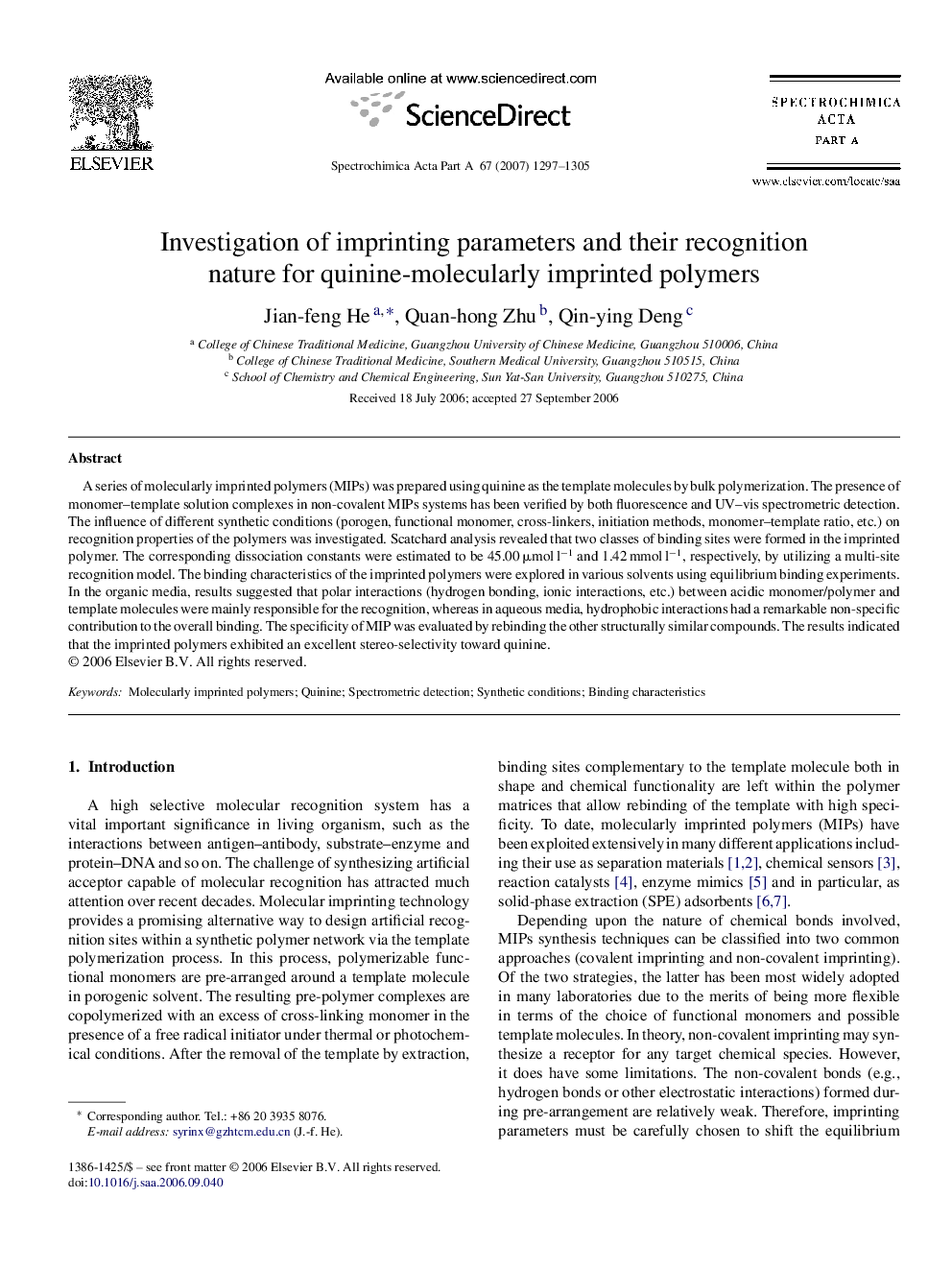| Article ID | Journal | Published Year | Pages | File Type |
|---|---|---|---|---|
| 1235104 | Spectrochimica Acta Part A: Molecular and Biomolecular Spectroscopy | 2007 | 9 Pages |
A series of molecularly imprinted polymers (MIPs) was prepared using quinine as the template molecules by bulk polymerization. The presence of monomer–template solution complexes in non-covalent MIPs systems has been verified by both fluorescence and UV–vis spectrometric detection. The influence of different synthetic conditions (porogen, functional monomer, cross-linkers, initiation methods, monomer–template ratio, etc.) on recognition properties of the polymers was investigated. Scatchard analysis revealed that two classes of binding sites were formed in the imprinted polymer. The corresponding dissociation constants were estimated to be 45.00 μmol l−1 and 1.42 mmol l−1, respectively, by utilizing a multi-site recognition model. The binding characteristics of the imprinted polymers were explored in various solvents using equilibrium binding experiments. In the organic media, results suggested that polar interactions (hydrogen bonding, ionic interactions, etc.) between acidic monomer/polymer and template molecules were mainly responsible for the recognition, whereas in aqueous media, hydrophobic interactions had a remarkable non-specific contribution to the overall binding. The specificity of MIP was evaluated by rebinding the other structurally similar compounds. The results indicated that the imprinted polymers exhibited an excellent stereo-selectivity toward quinine.
